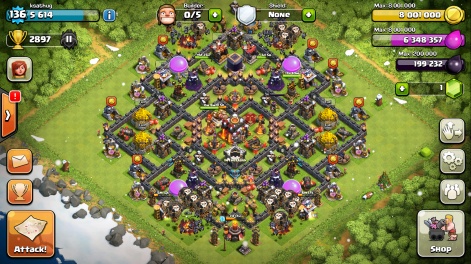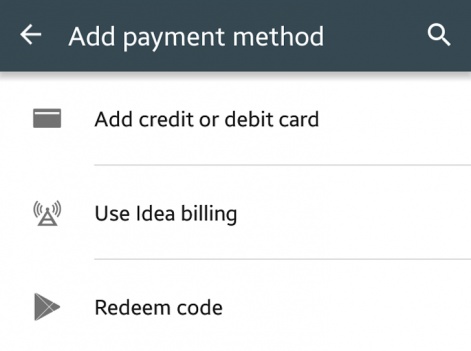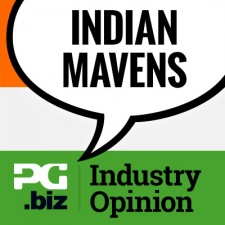Access to credit cards has been a long-standing barrier to monetising mobile games in the Indian market.
Many have suggested that carrier billing - the ability to pay for digital content via your network provider - could be the answer.
Having already been available on Windows Phone in India since 2014, Google has now launched carrier billing on the Play store.
With Android enjoying nearly 90% of the smartphone market share in India, the potential is massive. However, Google Play carrier billing is currently limited to customers of Idea Cellular - the third largest Indian network.
As such, we ask our Indian Mavens:
- What is the significance of carrier billing for Indian developers and consumers?
- Will it result in higher revenues for developers targeting the local market? Or is global still the way to go?
Carrier Billing is often dubbed as the last standing barrier to healthy monetisation for India, where most developer monetise via advertisements.
In my opinion, the significance remains to be seen, considering the option of carrier billing is only available to the subscribers of Idea Cellular (15-18% Market Share) on Google Play.
To measure impact, carrier billing will have to expanded on to users of other services as well.
Will it result in higher revenues? I don’t think so. I think the barrier is not modality, but intent.
As long as consumers don’t see value in spending money on games (which they don’t, given a wide range of global and local titles available to them for free), they won’t spend money on them.
I think the barrier is not modality, but intent.Amit Goyal
Earlier, both Apple and Google introduced 10 Rupees pricing for the Indian Market. We did not register any significant growth (neither did a number of developer friends I spoke to) that could be attributed to this move.
If there was intent to spend on games among the Indian consumers, I would expect to see some growth when a more attractive price point was introduced.
I expect to see carrier billing down the same road even after more carriers are looped in, though I would love to be wrong.

Shailesh Prabhu is an Indie Game Designer from India who has been designing games for over ten years. Seven years ago he founded Yellow Monkey Studios and is the recipient of numerous game design and entrepreneurship awards around the world. Socioball, HUEBRIX, It’s Just a Thought are some of his recent games. Shailesh is also an excellent cook, loves playing tennis, gardening and DIY projects apart from sporting facial hair.
I couldn't agree more with the point about the intent!
I think the fact that games are a form of entertainment that actually delivers "value", and that we can/should pay for them, is still an alien concept to Indians.
Let us see how this change impacts things. I am not optimistic of overnight results.
I painfully and completely agree about the intent to pay for games being extremely low in India.
However, it can't be discounted that the introduction of carrier billing as an additional mode of payment changes things in terms of absolute numbers, which could have an effect on monetisation.
When an audience changes from 60 million to 200 million, it's more than likely that we will see the needle move.Raoul Nanavati
According to the 'Internet in India 2015' report by the Internet and Mobile Association of India, approximately 30 million people have credit cards in India.
Let's just double that number for posterity and say 60 million have credit cards and can pay for digital products today.
Around 270 million people access the internet through their smartphones and have an active account with a telecom operator.
That still leaves over 200 million people who could now potentially spend if all carriers integrate with Google Play and other app stores.
When the price points on the app stores lowered to Rs. 10, it was addressing the same audience as before - and so it makes sense for it not to make much of difference because of the very real intent issue in India.
My hunch is that when an audience changes from 60 million to 200 million, it just seems more likely than not that we will see the needle move.

Shailesh Prabhu is an Indie Game Designer from India who has been designing games for over ten years. Seven years ago he founded Yellow Monkey Studios and is the recipient of numerous game design and entrepreneurship awards around the world. Socioball, HUEBRIX, It’s Just a Thought are some of his recent games. Shailesh is also an excellent cook, loves playing tennis, gardening and DIY projects apart from sporting facial hair.
Fair point Raoul, but we have plenty of "accidental" subscribers through schemes like "Recharge your talktime this week and get 1GB free 3G/4G data!"
Are these people using the internet, or downloading games, or do they even care about any of it? How do we find those out before making such predictions?
In my mind that is a huge number, too, and can bring down the average monthly data usage to less than 100 MB.

7+ years of experience in Gaming Industry. Currently spearheads underDOG Gaming as a Game Designer, Business and Product Guy.
I think the introduction of carrier billing, though currently only with Idea, will surely positively affect the monetisation a (tiny) bit.
I still haven't heard of any great numbers, but yes, it definitely gives the consumers an additional way for purchasing without credit cards involved. That's a good thing to start with.
But in terms of making higher revenues, I don't think so.
To agree with what Amit and Raoul mentioned, intent matters a lot as currently the majority of Indian audience is not ready to pay for games as there is a wide range of global/serious content available for free.
On carrier billing, it’s definitely been one of those topics that have been pretty divisive on the possibility of being the “Silver Bullet” for developers monetising in India.
My own personal view on this is that while carrier billing is not going to be a silver bullet, it is definitely going to improve monetisation by small percentages over time.
Idea being the only carrier having integrated right now does not reflect the true potential.Hrishi Oberoi
Idea being the only carrier having integrated right now, and not nearly having as much market share as the others, does not reflect the true potential.
There are two points to consider from the Indian consumer’s perspective: access to billing and intent of purchase. While carrier billing solves the first (to a certain extent), it does not address the second.
It is quite well known that intent to purchase for games and other digital content is lower in India than in other countries, but at the same time, some of those who do have the intent don’t have the ability to make that purchase.
That is the audience that will be addressed with the introduction of carrier billing on Google Play.
In effect, if you are already making money in India, you will end up making more - whether that is 5% more or 75% more, that is yet to be determined.
Games like Clash of Clans and the Teen Patti games are the top earners from Idea carrier billing on the Google Play Store, but they were already the top earners on Google Play before this billing was introduced.
Exactly how much did it move their needle? That’s a question only they can answer.

On the other hand, if games already have low conversion rates and do not figure prominently in the Google Play grossing charts, it’s very unlikely that they will see a significant boost due to the introduction of carrier billing.
Career billing is a huge plus, and I really hope other carriers follow suit and start adopting it too.
The problem with Indian consumers has always been twofold: lack of options and lack of intent.Shaan Mishra
The problem with the Indian consumers has always been twofold. Lack of options and, as Amit said, lack of intent.
Even if you wanted to buy something legally/spend money on a game, it's wasn't always the easiest or the most feasible thing to do.
Hopefully, as more options and choices open up, slowly but surely the intent will change too.
But right now, global is the way to go.
Who knows, maybe once buying and spending on global products become widely accepted by the Indian consumers, they'll hopefully turn to local products that can offer the same level of quality at a more affordable rate.
When that happens, it'll be great if all the options are in place for them to have a smooth transitions.
I am not an Idea cellular customer, and I am not sure if the company has glorified it enough - or even run a mere advertisement to announce it, other than the coverage by technology sites that cater to a tiny percentage of the casual mobile gamers in India.
So, I believe that there has probably been a zero to 1% change since carrier billing got here!
Until it has been tested, proven or falsified, I am going to believe that carrier billing - when brought to major networks - can indeed bring about a change in the psychology of the average Indian smartphone user.

Keep in mind, the average user in India does not care about Google Wallet or Paypal - they don't want to sign up for a new payment system when they aren't looking to pay in first place!
So carrier billing, if done right, could bring a change.
The subconscious mind does not value prepaid credits to be same as cash.Deepak Madathil
One, because the subconscious mind does not value prepaid credits to be same as cash, since it was already paid for with cash. And two, when they realise how intuitive carrier billing is, it could get addictive and naturally become their first choice of payment type.
Still, it may not bring any moolah for games that cost more than 10-30 Rupees, considering the average talk-time prepay per month is 250-300 Rupees.
So, the combination of carrier billing and Rs. 10 pricing has a good chance of paying my rent.
With all that said, to actually see how it’s been working out until now, I am hoping some company that has been making good bucks already decides to make its carrier billing experience public.
Since carrier billing has been around for almost 2 years now in Windows Phone Store, there must be some data out there.

Poornima has been part of the gaming industry for over 15 years and undertaken roles varying from Game Designer to Producer to Studio head and Entrepreneur.
She has been part of companies like Indiagames (Disney India), Jumpstart, GSN Games etc.
She is currently a Director of Design at Zynga.
She has worked on franchises like BioShock Mobile, How to Train your Dragons, Neopets, and FarmVille 2: Country Escape to name a few.
She is a Women in Games Ambassador and also a Hall of Fame Inductee at the Global WIG Awards 2020, making her the first Indian game developer to receive such an honour.
It is a good step forward. It may eventually pave the way to something better. But I don't think it is going to make any significant impact right away.
We can introduce cheaper IAPs, a hundred different payment models, but - resonating with the crowd - the 'intent to purchase' is the concern at the moment, especially for mobile games.
Exceptions are there, of course.
Carrier billing will certainly see some growth in converting non-payer to payers, but marginally.
This is just a beginning in disrupting in current system.Laxmi Khanolkar
However this can happen only when all the operators start offering this. For developers, there can be some more strategies/offers that can be experimented to see increased conversion.
In my opinion, this is just a beginning in disrupting in current system.
Due to carrier billing, the local market size will grow up by opening up second tier cities where credit card penetration is low.
But willingness to pay will still be a hurdle, and hence global will be part of the strategy to survive.























